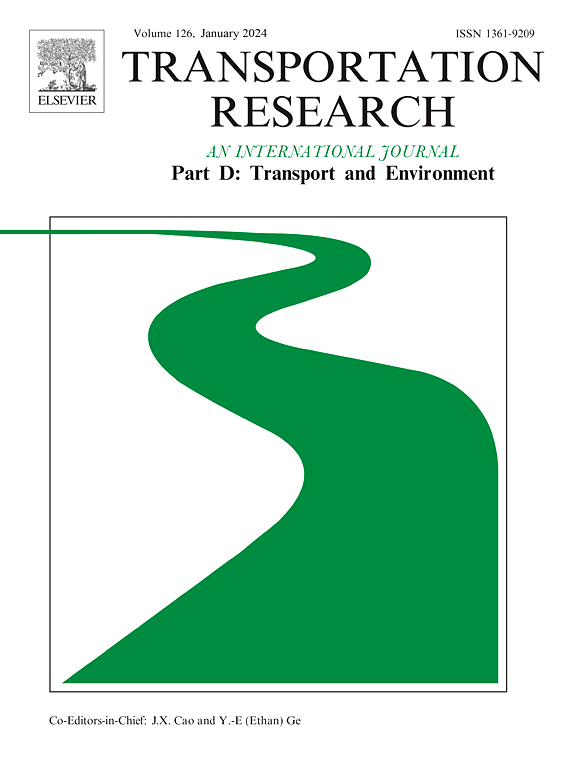Evaluating low-emission-zone impacts on urban road transport system in large city
IF 7.3
1区 工程技术
Q1 ENVIRONMENTAL STUDIES
Transportation Research Part D-transport and Environment
Pub Date : 2024-11-07
DOI:10.1016/j.trd.2024.104503
引用次数: 0
Abstract
The purpose of the study was to assess the impact that a low emission zone (LEZ) would have on the road transport subsystem. Different scenarios were adopted regarding: the spatial extent of the zone itself; the stages of its implementation, and the vehicles on the network (by age, engine displacement, and fuel type). The study was based on a macroscopic traffic model of Łódź employed to analyse how any LEZ-related restrictions may affect the operation of the urban road transport system in the city. The conducted analyses showed that while the implementation of a low emission zone would positively affect the environment, it would have a negative impact on the performance of the urban transport system itself. The simulations for each spatial scenario of the LEZ revealed that it would increase the travel times and distances necessary within the city limits, and also decrease travel speeds.
评估低排放区对大城市道路交通系统的影响
研究的目的是评估低排放区(LEZ)对道路运输子系统的影响。在以下方面采用了不同的方案:低排放区本身的空间范围、实施阶段以及网络中的车辆(按车龄、发动机排量和燃料类型)。该研究基于罗兹的宏观交通模型,用于分析任何与LEZ相关的限制措施会如何影响该市城市道路交通系统的运行。分析结果表明,虽然实施低排放区会对环境产生积极影响,但会对城市交通系统本身的性能产生负面影响。对低排放区各空间方案的模拟显示,低排放区将增加城市范围内必要的旅行时间和距离,并降低旅行速度。
本文章由计算机程序翻译,如有差异,请以英文原文为准。
求助全文
约1分钟内获得全文
求助全文
来源期刊
CiteScore
14.40
自引率
9.20%
发文量
314
审稿时长
39 days
期刊介绍:
Transportation Research Part D: Transport and Environment focuses on original research exploring the environmental impacts of transportation, policy responses to these impacts, and their implications for transportation system design, planning, and management. The journal comprehensively covers the interaction between transportation and the environment, ranging from local effects on specific geographical areas to global implications such as natural resource depletion and atmospheric pollution.
We welcome research papers across all transportation modes, including maritime, air, and land transportation, assessing their environmental impacts broadly. Papers addressing both mobile aspects and transportation infrastructure are considered. The journal prioritizes empirical findings and policy responses of regulatory, planning, technical, or fiscal nature. Articles are policy-driven, accessible, and applicable to readers from diverse disciplines, emphasizing relevance and practicality. We encourage interdisciplinary submissions and welcome contributions from economically developing and advanced countries alike, reflecting our international orientation.

 求助内容:
求助内容: 应助结果提醒方式:
应助结果提醒方式:


